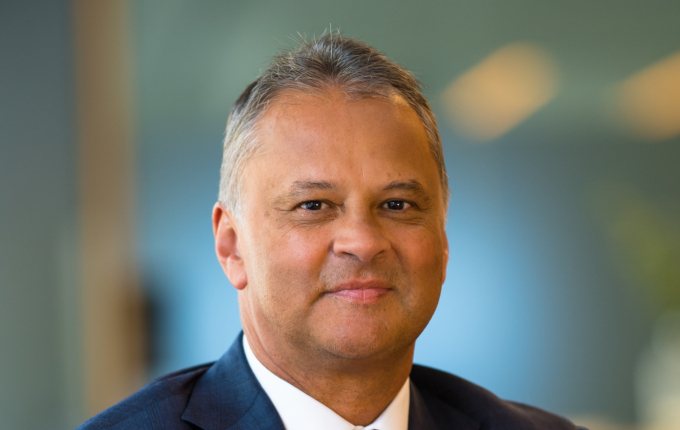When Unisuper decided to internalise asset management functions, it adopted an approach of ‘logical incrementalism’ rather than putting forward a grand vision for the future, CIO John Pearce says.
When John Pearce joined Unisuper 11 years ago as Chief Investment Officer, he was given a clear mandate: bring funds in-house.
But beyond this objective, there wasn’t a clear picture of what that was going to look like, Pearce says in the [i3] Podcast published last month.
“People ask me often: ‘What was the vision?’ and I’m quick to say that we didn’t actually have one,” he says.
“Visions can be good, but they can also work against you. Visions can be a scary thing. Unisuper was a successful fund. It wasn’t a turnaround story, so why go down this path? A vision was potentially going to be dangerous.”
Instead, Pearce took the approach of making incremental changes and waited to see how things worked out before the fund took the next step.

We employed a phrase that I actually stole from somebody else: Michael Chaney, who was the boss of Wesfarmers. He used to use this term: ‘logical incrementalism’. That is really just doing things in a logical way, step by step, and so if we do fail at any given point, we are not going to fall too far
“We employed a phrase that I actually stole from somebody else: Michael Chaney, who was the boss of Wesfarmers. He used to use this term: ‘logical incrementalism’. That is really just doing things in a logical way, step by step, and so if we do fail at any given point, we are not going to fall too far,” he says.
“We didn’t start with a big bang theory. We started by implementing a listed property securities portfolio. It was about 25 stocks, [using] Bloomberg end-to-end.
“We basically said: ‘Look this is going to be the first portfolio. There is not much downside here; we run it pretty much on a passive basis. If things don’t blow up, we might try something a little more ambitious.’ That is pretty much how we got onto the journey.”
Today, Unisuper manages about $100 billion, of which 70 per cent is managed in-house. But he says that without a slow-but-steady approach, it might have never gotten to where it is now.
“If you think about it [that] from day one I said to the board: ‘Look, within five years’ time, we are going to do billions of dollars of zero-cost collars on currencies, then you would have a few people on the board really worried,” he says.
“But there was never ever a leap to that. When it was time to do something like that, the investment committee said: ‘Yes, that makes sense.’”
Stakeholder Backing
Pearce points out it was very important to have the support of the board and the investment committee because otherwise they would have ended up having to constantly justify their decisions.
“You’ve got to have strong sponsorship at the board level because without that you are fighting a battle that you’re probably going to lose at the end. Because as soon as something goes wrong, you’ll have a problem progressing,” he says.
“I was very fortunate in that I had a sponsor in [Unisuper Chair] Chris Cuffe. He and I have got a really long association in a business context and as friends, so there was a lot of trust there.
“Then I was also very fortunate to have an investment committee that was experienced; they had investment backgrounds themselves.

We were clear in terms of what were the board’s responsibilities and the investment committee’s responsibilities. And management, once we stayed within the boundaries stipulated by the board and investment committee, we were allowed to get on with it
“We were clear in terms of what were the board’s responsibilities and the investment committee’s responsibilities. And management, once we stayed within the boundaries stipulated by the board and investment committee, we were allowed to get on with it.”
He emphasises that going from a fully outsourced model to a hybrid model, that has both internally managed mandates and externally managed ones, is not simply a project where you can set clear objectives and key milestones.
“Logical incrementalism to me means that these are business transitions. They are not projects. With a project, everything has to be done in one day,” he says.
“Be pretty clear with what you are going to achieve in three months or six months, but don’t put a line in the sand and say: ‘This is where we have to be in three years’ time.’ Because things change. If the facts change, your opinion has to change.
“We had some very clear parameters on what we were going to manage in-house and what not. We were not going to manage anything where we clearly didn’t have any competitive edge. So we were very disciplined in the types of strategies.
“We looked at technology mandates, high-yield mandates, Asian mandates, Japanese mandates, Indian mandates. We were never going to be able to get the team to manage those types of strategies. So it was always going to be a hybrid model.”
__________
[i3] Insights is the official educational bulletin of the Investment Innovation Institute [i3]. It covers major trends and innovations in institutional investing, providing independent and thought-provoking content about pension funds, insurance companies and sovereign wealth funds across the globe.

